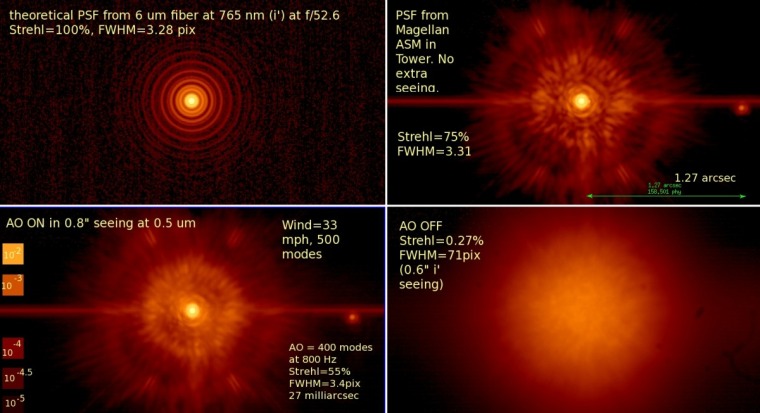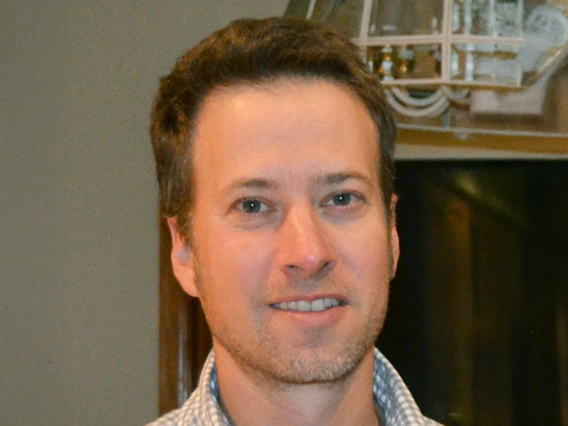Ground-based telescopes can be much larger than telescopes launched into space, allowing enhanced sensitivity and resolution for the study of exoplanets or other astronomical objects with compact sizes or separations. Adaptive optics have been developed for ground-based telescopes to overcome the blurring of images due to turbulence in the Earth's atmosphere, and allow the full potential of large apertures to be realized. Adaptive optics at visible wavelengths now out-performs the Hubble Space Telescope (in terms of angular resolution), and near-IR adaptive optics systems on other Arizona telescopes provide some of the highest resolution images available. Combining adaptive optics and interferometry allows even larger, more powerful telescopes. Arizona’s Large Binocular Telescope Interferometer (LBTI) provides the angular resolution of a 23-m telescope, thus functioning now as the first of the “Extremely Large Telescopes.”
Many fields of research in astronomy depend critically on observations with high angular resolution. Researchers at Arizona often focus on exoplanets and their natal environments, using adaptive optics and interferometry to better understand formation pathways of planets and the demographics of mature planetary systems. A range of other topics are also studied, including white dwarfs, brown dwarfs, and active galactic nuclei. Steward Observatory astronomers also actively pursue the development of new instrumentation and techniques to push towards extremely high resolution and contrast (extreme AO), and also uniquely low background, high-sensitivity infrared observations with adaptive secondary mirrors.
Associated Faculty and Reseach Staff
J. Roger P. Angel
J. Roger P. Angel
Laird Close
Laird Close
Ewan Douglas
Ewan Douglas
Josh Eisner
Josh Eisner
Steve Ertel
Steve Ertel
Olivier Guyon
Olivier Guyon
E. Keith Hege
E. Keith Hege
John M. Hill
John M. Hill
Buell T. Jannuzi
Buell T. Jannuzi
Jarron Leisenring
Jarron Leisenring
Jared Males
Jared Males
Hubert (Buddy) Martin
Hubert (Buddy) Martin
Don McCarthy
Don McCarthy
Katie Morzinski
Katie Morzinski

Professor Laird Close and his team have achieved excellent AO images in the visible (55% Strehls at i' --765 nm) in the test tower in Italy with the MagAO system running in full 800Hz closed loop (400 modes) on R=8 star in 0.8" seeing (V band) and in simulated 33 mph winds. "This is an excellent level of correction, and suggests that MagAO will be a very powerful AO system" says Close. Close thanks his graduates students Jared Males and Derek Kopon and the whole Arcetri and Microgate AO teams for helping achieve these great results in Italy. https://visao.as.arizona.edu















